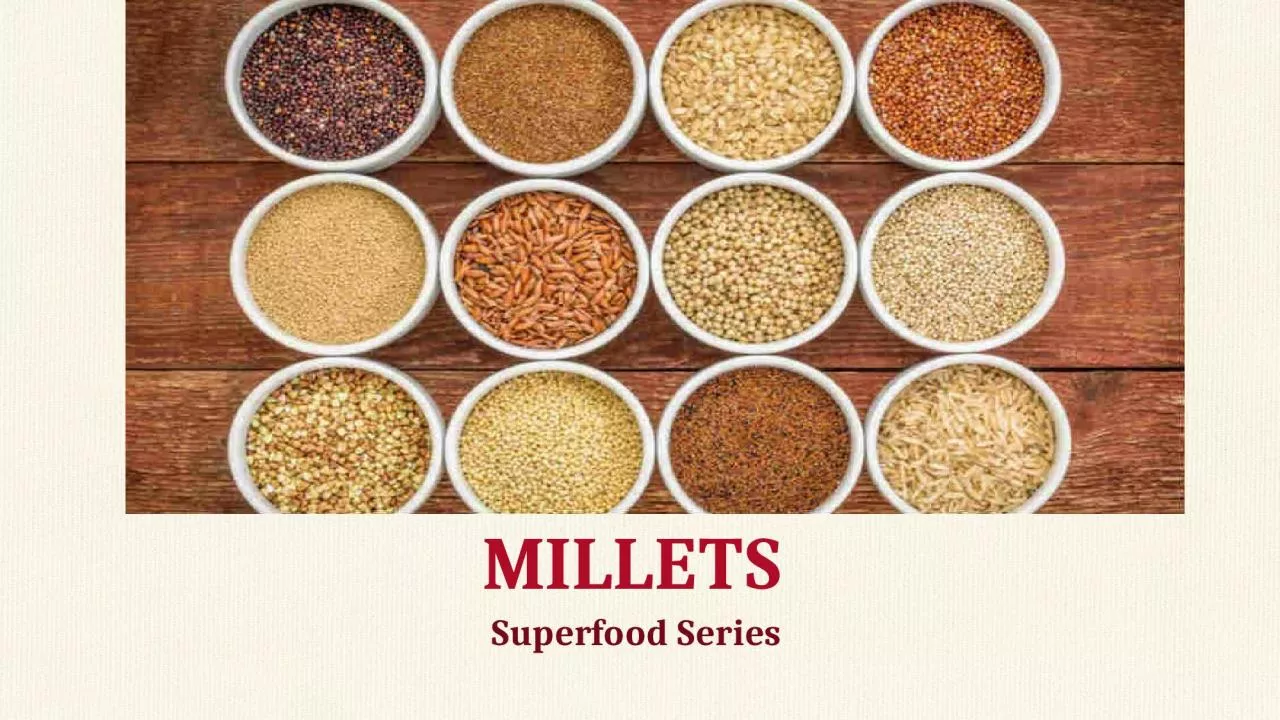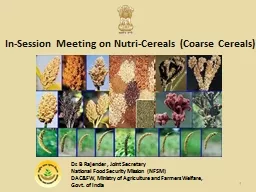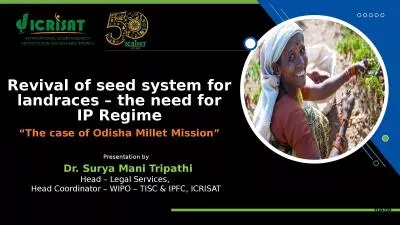PPT-MILLETS Superfood Series
Author : sophia2 | Published Date : 2024-01-29
Background Problem Diabetes heart diseases respiratory illnesses obesity or food allergies are categorised as Lifestyle diseases or non communicable diseases
Presentation Embed Code
Download Presentation
Download Presentation The PPT/PDF document "MILLETS Superfood Series" is the property of its rightful owner. Permission is granted to download and print the materials on this website for personal, non-commercial use only, and to display it on your personal computer provided you do not modify the materials and that you retain all copyright notices contained in the materials. By downloading content from our website, you accept the terms of this agreement.
MILLETS Superfood Series: Transcript
Download Rules Of Document
"MILLETS Superfood Series"The content belongs to its owner. You may download and print it for personal use, without modification, and keep all copyright notices. By downloading, you agree to these terms.
Related Documents







![[EBOOK] The Juice Generation: 100 Recipes for Fresh Juices and Superfood Smoothies](https://thumbs.docslides.com/882397/ebook-the-juice-generation-100-recipes-for-fresh-juices-and-superfood-smoothies.jpg)
![[EBOOK] The Juice Generation: 100 Recipes for Fresh Juices and Superfood Smoothies](https://thumbs.docslides.com/882430/ebook-the-juice-generation-100-recipes-for-fresh-juices-and-superfood-smoothies-6144864f23ecc.jpg)
![[READ] Superfood Slaw: Vegetable Solutions for Busy People](https://thumbs.docslides.com/882533/read-superfood-slaw-vegetable-solutions-for-busy-people.jpg)
![[EBOOK] Paleo Superfood Cookbook: 50 Quick and Delicious Recipes](https://thumbs.docslides.com/882548/ebook-paleo-superfood-cookbook-50-quick-and-delicious-recipes.jpg)
![[READ] - Superfood Snacks: 100 Delicious, Energizing & Nutrient-Dense Recipes (Julie](https://thumbs.docslides.com/888764/read-superfood-snacks-100-delicious-energizing-nutrient-dense-recipes-julie-morris-s-superfoods.jpg)
![[DOWNLOAD] - Superfood Kitchen: Cooking with Nature\'s Most Amazing Foods (Julie Morris\'s](https://thumbs.docslides.com/890106/download-superfood-kitchen-cooking-with-nature-s-most-amazing-foods-julie-morris-s-superfoods.jpg)

